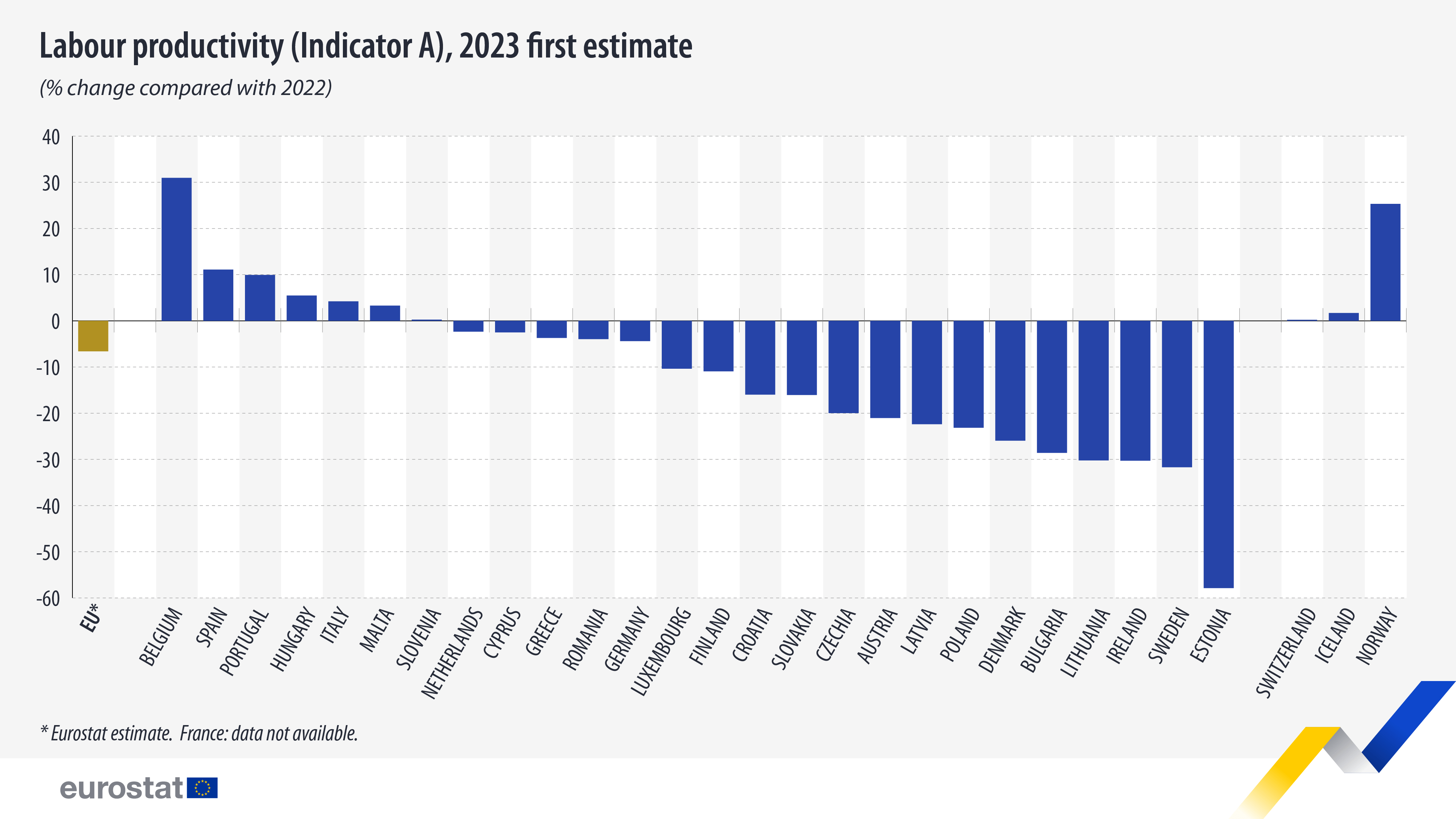According to the first preliminary data for 2023 from the economic accounts for agriculture (EAA), the index of agricultural labour productivity in the EU is estimated to have decreased year-on-year by 6.6%, after growth between 2019 and 2022.
This downturn was underpinned by a 7.9% decrease in the real value of the income generated by units engaged in agricultural production activities (factor income) and a further reduction (-1.4%) in the volume of agricultural labour (as measured by annual work units, representing full-time labour equivalents).
Most EU countries (19) registered lower agricultural labour productivity in 2023 (as measured by the index of the real income of factors in agriculture per annual work unit). The steepest rates of decline were for Estonia (-57.9%), Sweden (-31.7%), Ireland (-30.3%), Lithuania (-30.2%) and Bulgaria (-28.6%).
Nevertheless, there were higher levels in 7 EU countries; the sharpest rate of increase was in Belgium (+31.0%), followed by Spain (+11.1%), Portugal (+9.9%), Hungary (+5.5%), Italy (+4.2%), Malta (+3.3%) and Slovenia (+0.3%). These increases were due to lower prices of fertilisers and input and higher prices of products in which these countries are specialised, such as olive oil, potatoes or swine.
The gross value added by the EU’s agricultural industry, which is the difference between the value of agricultural output and the costs of the services and goods used in the production process (intermediate consumption), held relatively steady (+0.9%) in 2023 after a sharp rise (+15.1%) in 2022. In turn, this reflected prices that remained relatively unchanged after strong growth in 2021 and 2022, both for output (+0.5%) and intermediate consumption (-0.9%), as well as volumes that were down only slightly for output (-1.0%) and intermediate consumption (-0.6%).
EU agricultural labour productivity 35% higher in 2023 than in 2015
Despite the downturn in 2023, the index level of EU real factor income in 2023 remained 10.1% higher than in 2015. This income was nominally shared among a much smaller amount of labour; the index of agricultural labour input declined by 18.2% over the same period. Together, these changes resulted in EU agricultural labour productivity (Indicator A) being 34.6% higher in 2023 than in 2015, despite the estimated downturn in 2023.

Increased support for EU farmers through rural development funds |
More information: Eurostat









Leave a Reply